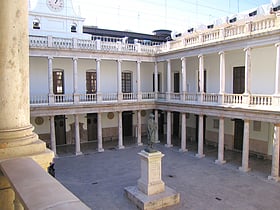Valencia: Baroque Architecture
Places and attractions in the Baroque architecture category
Categories
- Museum
- Area
- Park
- Specialty museum
- Baroque architecture
- Sport
- Sport venue
- Historical place
- Church
- Garden
- Beach
- Gothic architecture
- Art museum
- Arenas and stadiums
Museu de Belles Arts de València
The Museu de Belles Arts de València, nestled in the heart of Valencia, Spain, stands as a testament to the rich cultural tapestry of this vibrant city. This esteemed museum, one of the most significant repositories of fine arts in the country, is housed within the...
Valencia Cathedral
Landmark 13th-century place of worship Valencia Cathedral, officially known as the Metropolitan Cathedral–Basilica of the Assumption of Our Lady of Valencia, is a stunning piece of architecture that stands as a testament to the city's rich religious heritage.
Palacio del Marqués de Dos Aguas
Nestled in the heart of Valencia, Spain, the Palacio del Marqués de Dos Aguas stands as a testament to Spanish nobility and its profound influence on the city's cultural heritage. This ornate palace, now a museum, is renowned for its lavish façade and the rich...
San Esteban
The Iglesia de San Esteban is a parish church located in Plaça de Sant Esteve in the city of Valencia, in the Valencian Community, Spain.
Real Colegio Seminario del Corpus Christi
The Real Colegio Seminario del Corpus Christi is a former Roman Catholic school and seminary founded in 1583 in the Spanish city of Valencia. It is located in calle de la Nau in the old city, opposite La Nau, the former Universidad Literaria.
Palacio de Benicarló
The Palace of the Borgias is an aristocratic palace of Catalan Gothic and Renaissance styles located in the city of Valencia, Spain. It is now the headquarters of the Valencian Parliament.
La Nau
La Nau is the former building of the old Universidad Literaria in Valencia, and is today one of the smaller buildings of the modern Universitat de València. The street itself is known as the carrer de la Nau after the building. It was built in 1497 and remodeled in 1830. The courtyard is now used for a café and exhibitions.
Map







